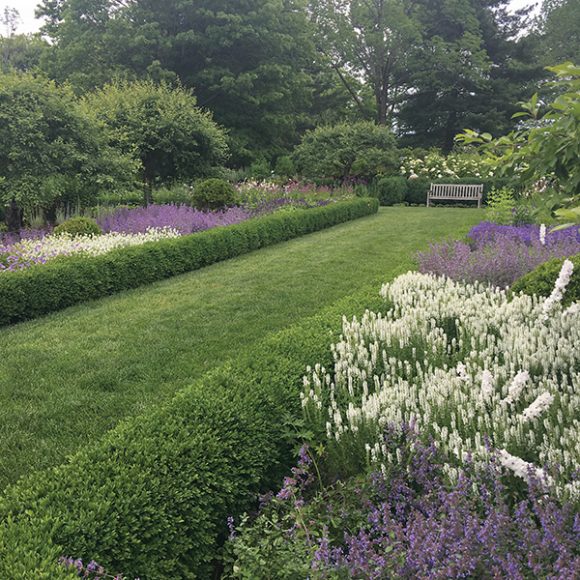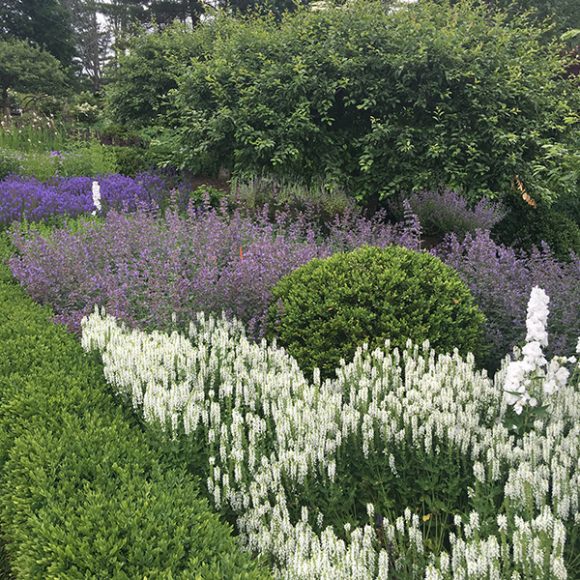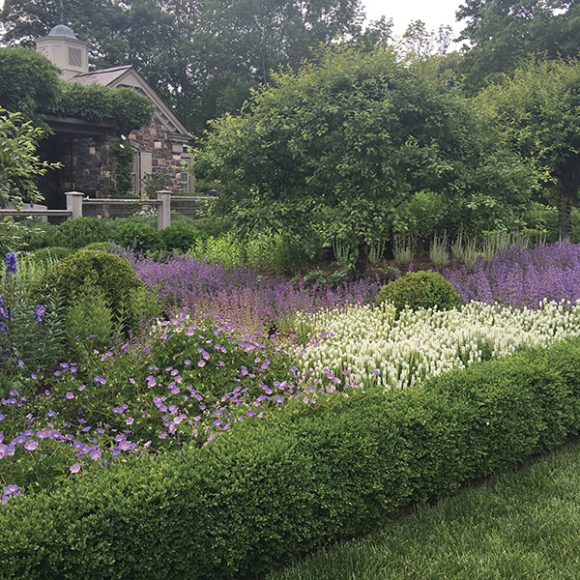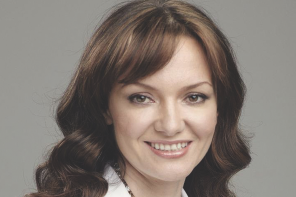The great 19th century botanist Luther Burbank once observed, “Flowers always make people better, happier and more helpful; they are sunshine, food and medicine for the soul.”
But even the most vibrant blossoms can create discomfort if they are offered in a lopsided presentation. Patricia Caffray realized that after her family took up residence in their 23-acre Greenwich estate four years ago.
“When we moved in here, there was a garden that was sort of a circular garden that bridged the house to the pool,” she recalls, referring to the diagonal stretch between the two structures. “It made for a very awkward space.”
Caffray, a stay-at-home mom with twin 15-year-olds and a husband who is a hedge fund executive, consulted with Deborah Nevins & Associates, a landscape architectural firm, and horticulturalist Marsha Kaufman. She also employed the services of two local vendors, Rosedale Nurseries and Labriola Contracting, to create a more sophisticated garden design that was both aesthetically pleasing and sturdy enough to withstand the eccentricities of the Connecticut weather.
“We try to garden all the way through Christmas,” Caffray says. “We try to keep the garden alive. So the selection of plant materials is based on structure. And we burlap everything during the winter to keep it from getting winter burn.”
A key floral player in this setting are hydrangeas — blue hydrangeas populating the garden and the area around the pool house while their white cousins occupy space around the Caffray home.
“They really pay the rent,” says Kaufman, who is at the Caffray estate at least once a week to observe the garden’s progress. “For the space that they take up, they are really rewarding. They bloom for a long period of time. They are big, they are beautiful, there’s nothing not to like about them.”
Also ubiquitous is boxwood, brilliantly trimmed into sharp formations that frame the colorful perennial beds at the heart of the garden. Caffray says that planting this shrub around her imposing 12,312-square-foot stone home has helped to give it a sense of external serenity.
“This is a big, strong house, so we tried to soften a lot of it with box,” she said. “We had old crab apple trees on the other side of the house, but we didn’t like them there. We figured they would make a good winter and summer structure for the garden.”
One element that is absent from the Caffray garden is an overload of color. While some garden designs cannot seem to get enough hues into the mix, Caffray prefers a more understated approach to her setting.
“I am very particular about the color palette,” she says. “I like it more monochromatic than most. So you will see a garden that is almost principally blue and white.”
But that’s not to say that plants sporting other colors will get yanked. The early spring edition of the garden is laced with bright rows of pink and red sweet peas flowers. Alas, their delicacy dooms them to a relatively brief life that ends with summer’s heat, Kaufman says.
Also taking up residence in the pre-summer period are tulip cuttings, which take root in the small space of the garden set aside for herbs. Caffray’s herbs offer the only plants that can make the trip to the dinner table, though the idea of bringing more edible delights to the garden is something that she has been toying with for some time.
“I haven’t done a vegetable garden, because I haven’t figured out where to put it,” she says. “The whole property has a deer fence, so we are able to do that sort of thing. It’s just a matter of time.”
Caffray tries to keep the garden care as natural as possible. An abundance of hawks in the area helps to police intrusive, small animals, although last year a mischievous rabbit spent a surplus amount of time creating grief while evading capture. Organic products are used as much as possible to keep the landscape chemical-free, while watering the grounds has generated some interesting exercises.
“The property is irrigated,” Caffray says. “The ground conditions are fairly wet because it is a clay surface, which makes cultivating the gardens difficult. But it actually holds a lot of the water, so from the grass’ standpoint that’s a good thing. We water as needed. We have to adjust the water all the time, because some of the plants in the garden like water and some don’t. Hydrangeas like water. Sage doesn’t like a lot of water. You have to be on top of it, based on the environment and the conditions.”
If anything, it is not a solitary pursuit. Caffray acknowledges that you need “a ton of people” to help with a regimen that requires mowing three times a week and garden upkeep twice a week. There may be more work to come, as Caffray considers expanding the garden setting to the east side of her home.
And what does this endeavor cost? When queried, Caffray smiles gently and peers off to the horizon. “It’s a lot,” she says in a whisper.
But from the looks of things, clearly well worth it.







